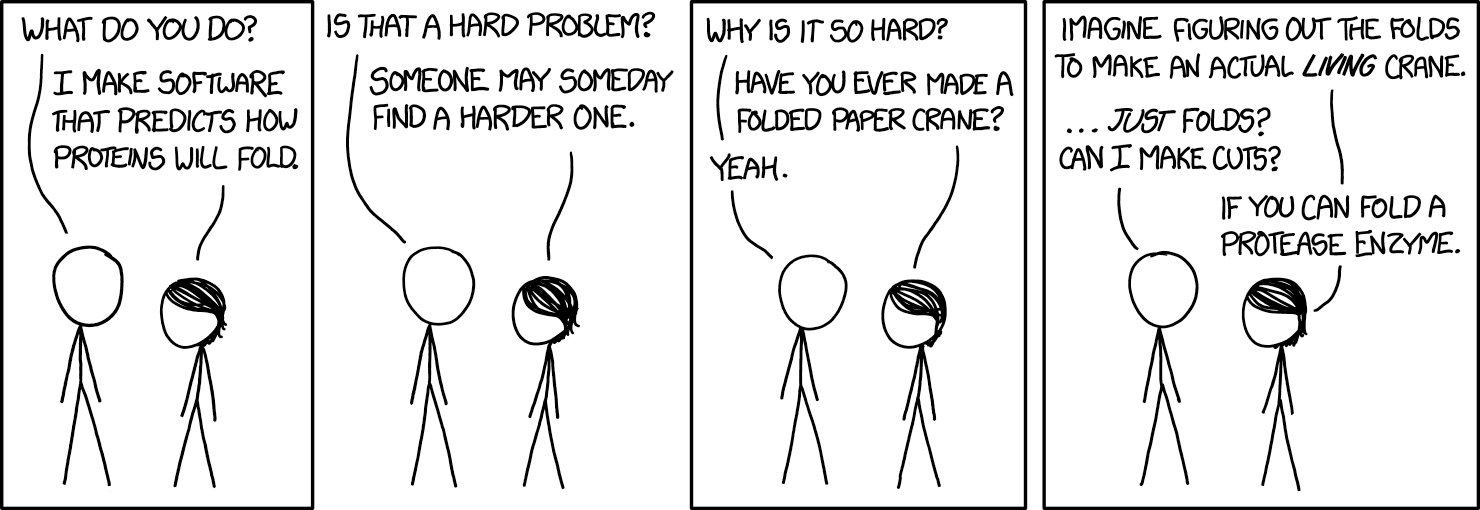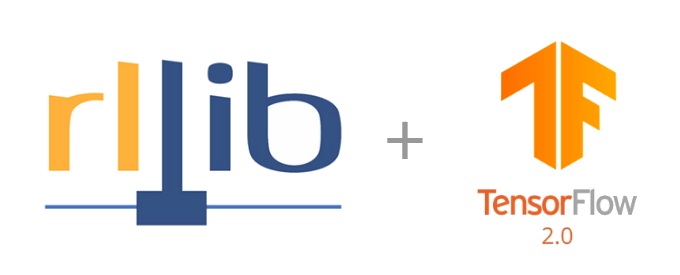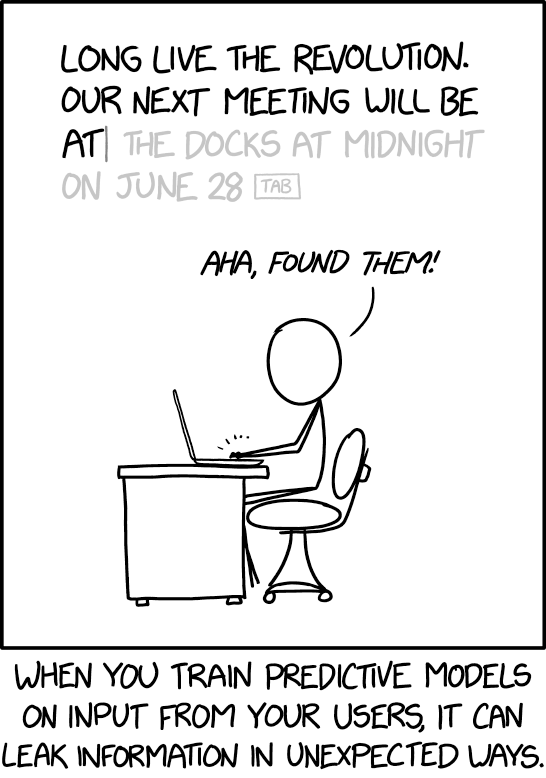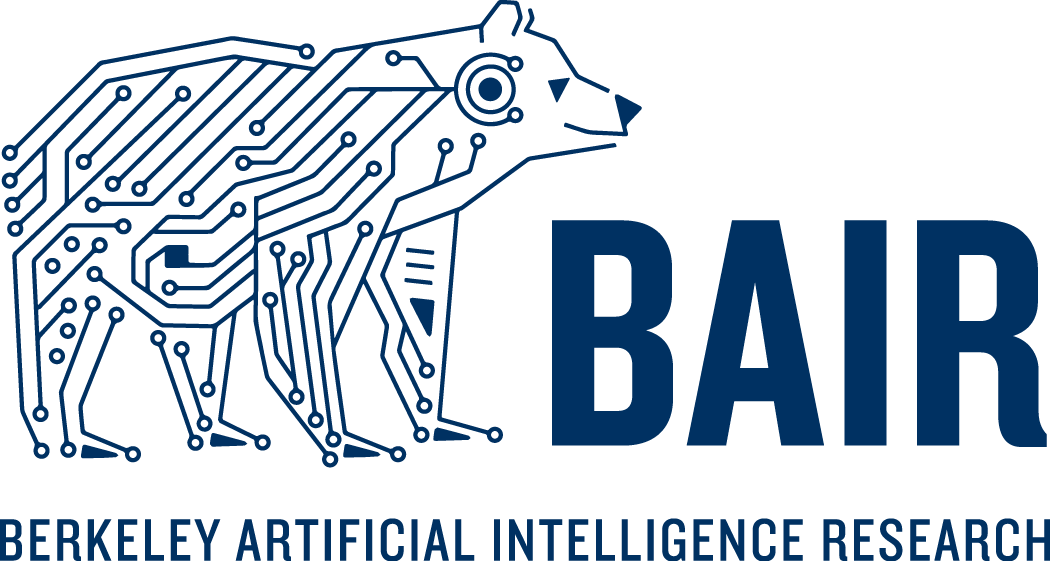The incredible success of BERT in Natural Language Processing (NLP) showed that large models trained on unlabeled data are able to learn powerful representations of language. These representations have been shown to encode information about syntax and semantics. In this blog post we ask the question: Can similar methods be applied to biological sequences, specifically proteins? If so, to what degree do they improve performance on protein prediction problems that are relevant to biologists?
We discuss our recent work on TAPE: Tasks Assessing Protein Embeddings (preprint) (github), a benchmarking suite for protein representations learned by various neural architectures and self-supervised losses. We also discuss the challenges that proteins present to the ML community, previously described by xkcd:

Continue
When learning to follow natural language instructions, neural networks tend to
be very data hungry – they require a huge number of examples pairing language
with actions in order to learn effectively. This post is about reducing those
heavy data requirements by first watching actions in the environment before
moving on to learning from language data. Inspired by the idea that it is
easier to map language to meanings that have already been formed, we introduce
a semi-supervised approach that aims to separate the formation of abstractions
from the learning of language. Empirically, we find that pre-learning of
patterns in the environment can help us learn grounded language with much less
data.
Continue
AI agents have learned to play Dota, StarCraft, and Go, by training to beat an
automated system that increases in difficulty as the agent gains skill at the
game: in vanilla self-play, the AI agent plays games against itself, while in
population-based training, each agent must play against a population of other
agents, and the entire population learns to play the game.
This technique has a lot going for it. There is a natural curriculum in
difficulty: as the agent improves, the task it faces gets harder, which leads
to efficient learning. It doesn’t require any manual design of opponents, or
handcrafted features of the environment. And most notably, in all of the games
above, the resulting agents have beaten human champions.
The technique has also been used in collaborative settings: OpenAI had one
public match where each team was composed of three OpenAI Five agents alongside
two human experts, and the For The Win (FTW) agents trained to play Quake were
paired with both humans and other agents during evaluation. In the Quake
case, humans rated the FTW agents as more collaborative than fellow humans
in a participant survey.
Continue
In this blog post, we explore a functional paradigm for implementing
reinforcement learning
(RL) algorithms. The paradigm will be that developers write the numerics of
their algorithm as independent, pure functions, and then use a library to
compile them into policies that can be trained at scale. We share how these
ideas were implemented in RLlib’s policy builder
API,
eliminating thousands of lines of “glue” code and bringing support for
Keras
and TensorFlow
2.0.

Continue

Figure 1: Our approach (PDDM) can efficiently and effectively learn complex
dexterous manipulation skills in both simulation and the real world. Here, the
learned model is able to control the 24-DoF Shadow Hand to rotate two
free-floating Baoding balls in the palm, using just 4 hours of real-world data
with no prior knowledge/assumptions of system or environment dynamics.
Dexterous manipulation with multi-fingered hands is a grand challenge in
robotics: the versatility of the human hand is as yet unrivaled by the
capabilities of robotic systems, and bridging this gap will enable more general
and capable robots. Although some real-world tasks (like picking up a
television remote or a screwdriver) can be accomplished with simple parallel
jaw grippers, there are countless tasks (like functionally using the remote to
change the channel or using the screwdriver to screw in a nail) in which
dexterity enabled by redundant degrees of freedom is critical. In fact,
dexterous manipulation is defined as being object-centric, with the goal
of controlling object movement through precise control of forces and motions
— something that is not possible without the ability to simultaneously impact
the object from multiple directions. For example, using only two fingers to
attempt common tasks such as opening the lid of a jar or hitting a nail with a
hammer would quickly encounter the challenges of slippage, complex contact
forces, and underactuation. Although dexterous multi-fingered hands can indeed
enable flexibility and success of a wide range of manipulation skills, many of
these more complex behaviors are also notoriously difficult to control: They
require finely balancing contact forces, breaking and reestablishing contacts
repeatedly, and maintaining control of unactuated objects. Success in such
settings requires a sufficiently dexterous hand, as well as an intelligent
policy that can endow such a hand with the appropriate control strategy. We
study precisely this in our work on Deep Dynamics Models for Learning Dexterous
Manipulation.
Continue
Kourosh Hakhamaneshi
Sep 26, 2019
In this post, we share some recent promising results regarding the applications
of Deep Learning in analog IC design. While this work targets a specific
application, the proposed methods can be used in other black box optimization
problems where the environment lacks a cheap/fast evaluation procedure.

So let’s break down how the analog IC design process is usually done, and then
how we incorporated deep learning to ease the flow.
Continue
Adam Stooke
Sep 24, 2019
UPDATE (15 Feb 2020): Documentation is now available for rlpyt! See it at
rlpyt.readthedocs.io. It describes program flow, code organization, and
implementation details, including class, method, and function references for
all components. The code examples still introduce ways to run experiments, and
now the documentation is a more in-depth resource for researchers and
developers building new ideas with rlpyt.
Since the advent of deep reinforcement learning for game play in 2013, and
simulated robotic control shortly after, a multitude of new algorithms
have flourished. Most of these are model-free algorithms which can be
categorized into three families: deep Q-learning, policy gradients, and Q-value
policy gradients. Because they rely on different learning paradigms, and
because they address different (but overlapping) control problems,
distinguished by discrete versus continuous action sets, these three families
have developed along separate lines of research. Currently, very few if any
code bases incorporate all three kinds of algorithms, and many of the original
implementations remain unreleased. As a result, practitioners often must
develop from different starting points and potentially learn a new code base
for each algorithm of interest or baseline comparison. RL researchers must
invest time reimplementing algorithms–a valuable individual exercise but one
which incurs redundant effort across the community, or worse, one that presents
a barrier to entry.
Yet these algorithms share a great depth of common reinforcement learning
machinery. We are pleased to share rlpyt, which leverages this commonality
to offer all three algorithm families built on a shared, optimized
infrastructure, in one repository. Available from BAIR at
https://github.com/astooke/rlpyt, it contains modular implementations of
many common deep RL algorithms in Python using Pytorch, a leading deep learning
library. Among numerous existing implementations, rlpyt is a more
comprehensive open-source resource for researchers.
Continue
We introduce Bit-Swap, a scalable and effective lossless data compression
technique based on deep learning. It extends previous work on practical
compression with latent variable models, based on bits-back coding and
asymmetric numeral systems. In our experiments Bit-Swap is able to beat
benchmark compressors on a highly diverse collection of images. We’re releasing
code for the method and optimized models such that people can explore and
advance this line of modern compression ideas. We also release a demo and
a pre-trained model for Bit-Swap image compression and decompression on your
own image. See the end of the post for a talk that covers how bits-back coding
and Bit-Swap works.
Continue
Nicholas Carlini
Aug 13, 2019
It is important whenever designing new technologies to ask “how will this
affect people’s privacy?” This topic is especially important with regard to
machine learning, where machine learning models are often trained on sensitive
user data and then released to the public. For example, in the last few years
we have seen models trained on users’ private emails, text
messages,
and medical records.
This article covers two aspects of our upcoming USENIX Security
paper that investigates to what extent
neural networks memorize rare and unique aspects of their training data.
Specifically, we quantitatively study to what extent following
problem actually occurs in practice:

Continue
To operate successfully in a complex and changing environment, learning agents must be able to acquire new skills quickly.
Humans display remarkable
skill in this area — we can learn to recognize a new object from one example,
adapt to driving a different car in a matter of minutes, and add a new slang
word to our vocabulary after hearing it once. Meta-learning is a promising
approach for enabling such capabilities in machines. In this paradigm, the
agent adapts to a new task from limited data by leveraging a wealth of
experience collected in performing related tasks. For agents that must take
actions and collect their own experience, meta-reinforcement learning (meta-RL)
holds the promise of enabling fast adaptation to new scenarios. Unfortunately,
while the trained policy can adapt quickly to new tasks, the meta-training
process requires large amounts of data from a range of training tasks,
exacerbating the sample inefficiency that plagues RL algorithms. As a result,
existing meta-RL algorithms are largely feasible only in simulated
environments. In this post, we’ll briefly survey the current landscape of
meta-RL and then introduce a new algorithm called PEARL that drastically
improves sample efficiency by orders of magnitude. (Check out the research paper and the code.)
Continue




